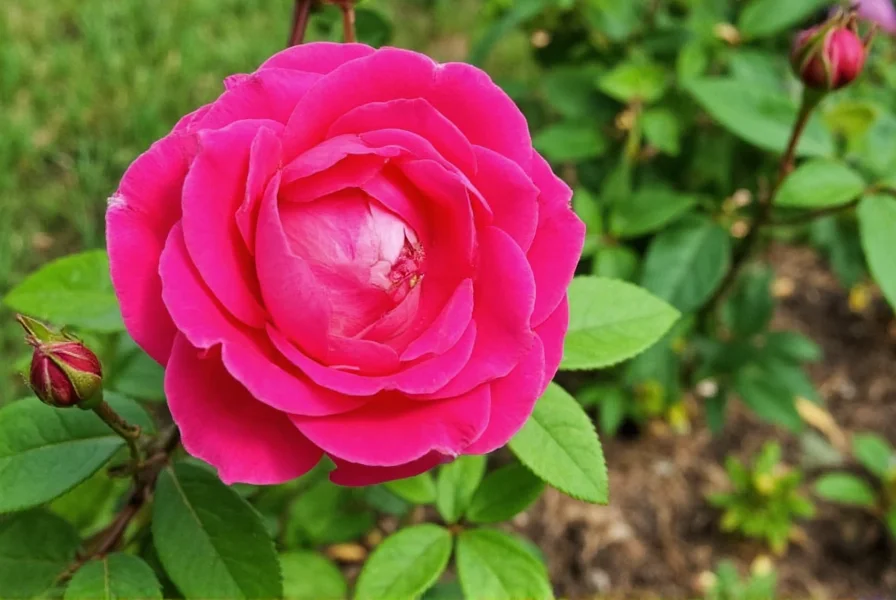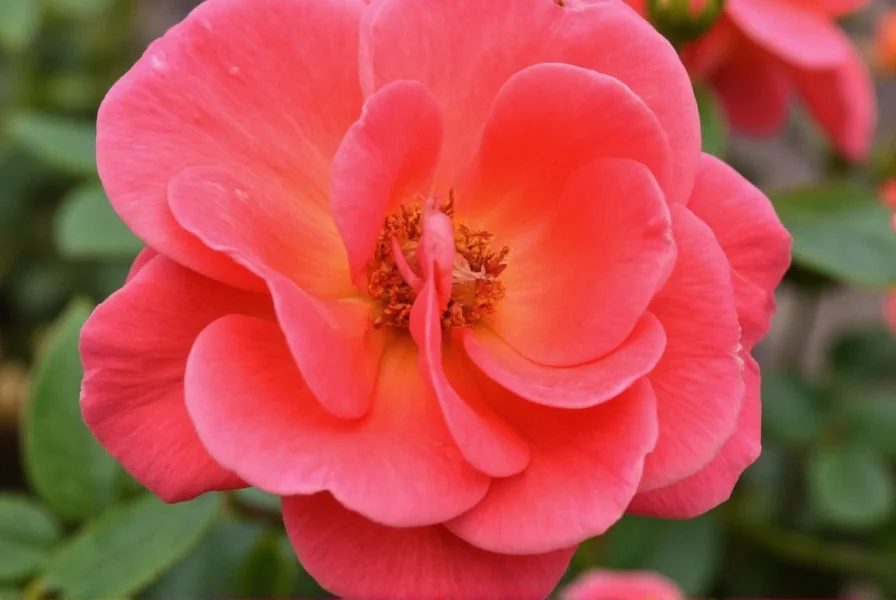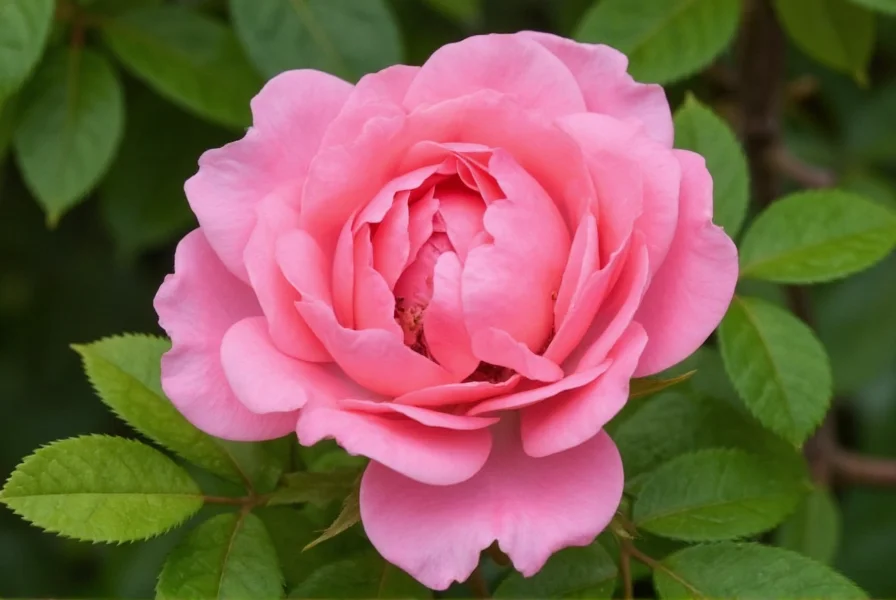The Saffron Rose (Rosa × damascena 'Saffron') is a distinctive hybrid tea rose cultivar known for its vibrant saffron-orange blooms, strong citrus-rose fragrance, and excellent garden performance. This medium-sized shrub produces large, high-centered flowers that transition from deep orange buds to warm golden-yellow blooms as they mature, creating a striking color gradient effect in the garden.
When searching for information about the Saffron Rose, gardeners typically want to understand its unique characteristics, growing requirements, and how it compares to other rose varieties. This comprehensive guide provides factual, research-based information about this exceptional rose cultivar, drawing from horticultural expertise and practical growing experience.
Understanding the Saffron Rose Cultivar
The Saffron Rose stands out in any garden with its distinctive coloration that perfectly captures the essence of its namesake spice. Unlike many orange roses that fade quickly, this cultivar maintains its vibrant hue throughout the blooming period. The flowers typically measure 4-5 inches in diameter with 30-35 petals arranged in a classic high-centered form that makes them excellent for cutting.
One of the most remarkable features of the Saffron Rose is its complex fragrance profile—a delightful blend of citrus notes with traditional rose aroma. This characteristic makes it particularly valuable for gardens designed with sensory appeal in mind. The plant itself grows to approximately 3-4 feet in height with a spread of 2-3 feet, making it suitable for both garden beds and container planting.

Growing Requirements for Optimal Performance
For gardeners seeking success with saffron roses, understanding their specific needs is essential. These roses thrive in full sun conditions, requiring at least 6-8 hours of direct sunlight daily to produce their characteristic vibrant blooms and maintain strong disease resistance.
| Growing Factor | Optimal Conditions | Notes |
|---|---|---|
| Sun Exposure | Full sun (6-8 hours) | Less sun results in fewer blooms and increased disease susceptibility |
| Soil Type | Well-draining loam | pH 6.0-6.5 preferred; amend heavy clay soils with organic matter |
| Watering | 1-2 inches per week | Water at base; avoid wetting foliage to prevent disease |
| Hardiness Zones | 5-9 | Requires winter protection in zone 5 |
Care and Maintenance Guidelines
Proper care ensures your saffron rose will reward you with abundant blooms throughout the growing season. Understanding saffron rose pruning techniques is crucial for maintaining plant health and maximizing flower production. The best time for major pruning is in early spring when buds begin to swell.
When pruning saffron roses, focus on removing dead or diseased wood first, then thin out crowded canes to improve air circulation. Cut at a 45-degree angle about 1/4 inch above an outward-facing bud. For optimal saffron rose bloom season performance, deadhead spent flowers regularly by cutting back to the first five-leaflet leaf.
Fertilization plays a key role in saffron rose care tips. Apply a balanced rose fertilizer according to package instructions, beginning in spring after the first flush of growth and continuing through late summer. Avoid late-season fertilization that might encourage tender growth before winter.
Disease Resistance and Common Challenges
One of the advantages of the Saffron Rose is its relatively good disease resistance compared to many other orange rose varieties. It shows moderate resistance to black spot and powdery mildew, though these issues can still occur under favorable disease conditions.
For gardeners concerned about saffron rose disease resistance, implementing cultural practices provides the best protection. Ensure proper spacing for air circulation, water at the base rather than overhead, and remove fallen leaves promptly. In regions with high humidity, preventative fungicide applications may be necessary during wet periods.
When considering saffron rose winter care, gardeners in colder zones should mound soil or mulch around the base of the plant after the ground has frozen to protect the graft union. Remove this protection gradually in spring as temperatures warm.

Design Applications and Companion Planting
The vibrant color of saffron roses makes them excellent focal points in garden design. They work particularly well when paired with blue or purple flowers that create striking color contrasts. Consider these effective saffron rose companion plants:
- Lavender for complementary purple tones and shared growing requirements
- Salvia varieties that provide vertical interest behind rose bushes
- Silver-foliaged plants like Artemisia that enhance the rose's warm tones
- Low-growing catmint that creates a beautiful color contrast at the front of borders
For container gardening enthusiasts, understanding growing saffron roses in containers is straightforward with the right approach. Choose a pot at least 18 inches in diameter with adequate drainage, use quality potting mix rather than garden soil, and be prepared to water more frequently than garden-planted roses. Container-grown saffron roses may need additional winter protection in colder climates.
Seasonal Performance and Bloom Cycle
Gardeners often inquire about the saffron rose bloom season, which typically begins in late spring and continues with repeat blooms through fall in most climates. The first flush of blooms is usually the most abundant, with subsequent flushes occurring every 5-6 weeks under proper care.
Unlike some roses that lose their color intensity as flowers mature, the Saffron Rose maintains its distinctive color gradient throughout the bloom cycle. The flowers typically last 7-10 days on the plant before petal drop, making them excellent for both garden display and cut flower arrangements.
Propagation and Availability
The Saffron Rose is typically propagated through grafting onto hardy rootstock, though some nurseries offer own-root plants. When purchasing, look for plants with healthy green canes and well-developed root systems. Bare-root plants are often available in late winter for spring planting, while container-grown specimens can be planted throughout the growing season with proper care.
What makes the Saffron Rose different from other orange roses?
The Saffron Rose distinguishes itself through its unique color transition from deep orange buds to golden-yellow open blooms, creating a striking gradient effect. Unlike many orange roses that fade quickly, it maintains its vibrant hue throughout the blooming period. It also features a distinctive citrus-rose fragrance and demonstrates better disease resistance than many comparable orange rose varieties.
How much sun does a Saffron Rose need to thrive?
Saffron Roses require full sun conditions, with a minimum of 6-8 hours of direct sunlight daily. Insufficient sunlight results in fewer blooms, weaker growth, and increased susceptibility to diseases like black spot and powdery mildew. In regions with extremely hot summers, some afternoon shade may be beneficial to prevent petal burn while still providing adequate light for flowering.
When is the best time to prune Saffron Roses?
The optimal time for major pruning of Saffron Roses is in early spring when the buds begin to swell but before significant growth occurs. This timing varies by climate zone but generally falls between late February and early April in most regions. For deadheading during the growing season, remove spent blooms as soon as they begin to fade by cutting back to the first five-leaflet leaf with an outward-facing bud.
Are Saffron Roses suitable for container gardening?
Yes, Saffron Roses adapt well to container growing with proper care. Use a pot at least 18 inches in diameter with excellent drainage, quality potting mix, and regular watering and feeding. Container-grown Saffron Roses may require more frequent watering than garden-planted specimens and need additional winter protection in colder climates by moving containers to an unheated garage or heavily mulching the root zone.
What are the best companion plants for Saffron Roses?
Excellent companion plants for Saffron Roses include lavender, which provides complementary purple tones and shared growing requirements; salvia varieties that add vertical interest; silver-foliaged plants like Artemisia that enhance the rose's warm tones; and low-growing catmint that creates beautiful color contrast at the front of borders. These companions not only enhance visual appeal but often share similar sun and soil requirements with roses.











 浙公网安备
33010002000092号
浙公网安备
33010002000092号 浙B2-20120091-4
浙B2-20120091-4